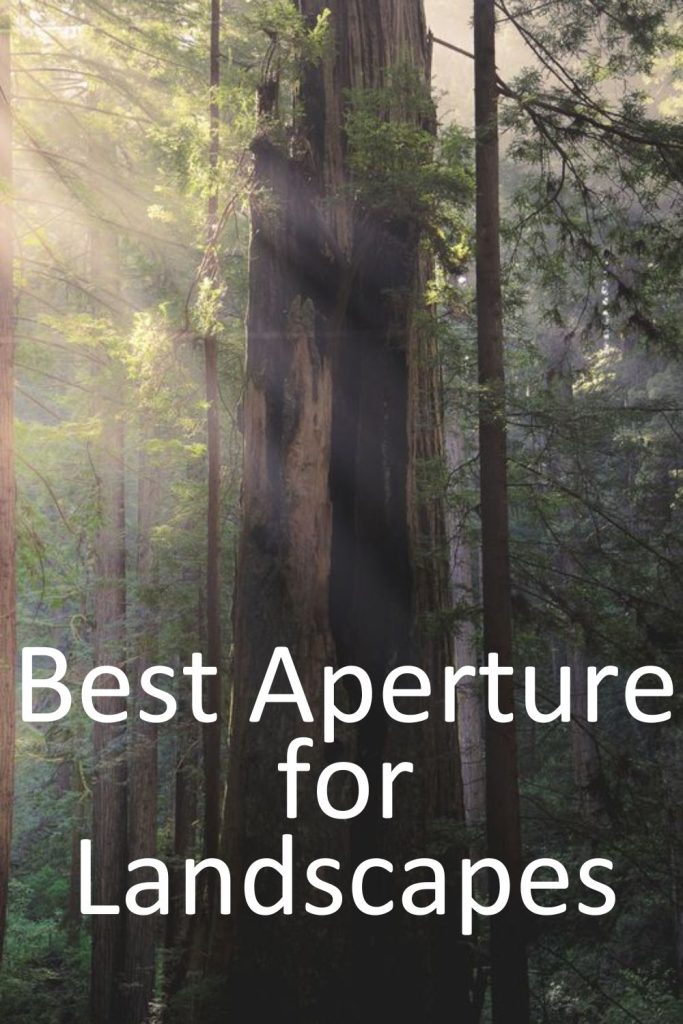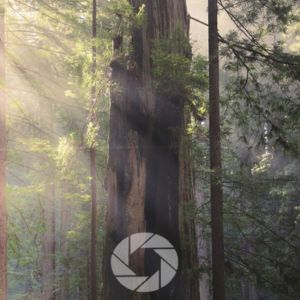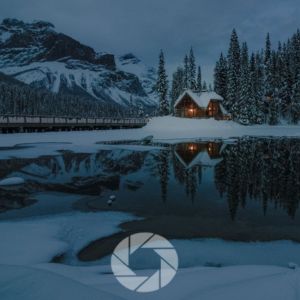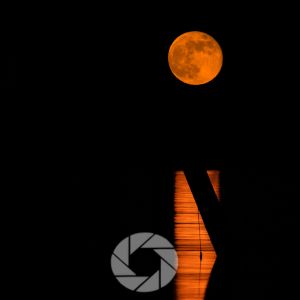
Best aperture for landscape photography doesn’t have to be a mystery. Even as a beginner, understanding how to choose the right f‑stop can elevate your images and build trust with clients.
In this post, I’ll break down everything you need to know; how f‑stops work, when to use each value, and how to align your vision with your aperture value.
I receive a small commission from links in this post, thank you for your support
What is Aperture and Why Does it Matter in Landscape Photography
What Is Aperture and What Is an F-Stop?
Aperture is the size of the opening in your lens that lets light into your camera. Aperture refers to the opening inside your camera lens that controls how much light reaches your sensor.
It’s a lot like your eye’s pupil, widening in low light to let more in, and narrowing in bright conditions to reduce glare.
But light isn’t the only thing aperture controls. It also shapes depth of field i.e how much of your scene appears in sharp focus from foreground to background. And in landscape photography, that depth is everything.
Aperture is measured in f-stops (like f/2.8, f/8, or f/16). Here’s the counterintuitive part: the smaller the number, the larger the opening. So an f/2.8 setting means your lens is wide open, letting in lots of light but only a narrow slice of your image will be in focus.
An f/16, on the other hand, is a tighter opening that lets in less light but brings much more of your scene into sharp detail.
When I’m leading tours, I often explain it like this:
- Wide aperture = more light, less in focus
- Narrow aperture = less light, more in focus
So when you hear someone talk about an “f-stop,” they’re just referring to how open or closed your lens is and ultimately, how you shape your viewer’s experience of the scene.
Read more about What is Aperture and Depth of Field here.
Discover Your Next Journey – These Tours are designed for people who connect with light and landscape.
Best Aperture for Landscape Photography
Aperture controls how much light enters your lens but more importantly, how much of your scene is in sharp focus, or “depth of field.”
For classic sweeping vistas where you want both the foreground and background sharp, f/8 to f/11 is typically the sweet spot.
These mid-range f‑stops offer excellent optical performance with minimal diffraction, making them ideal for landscape picture-perfect clarity.
Getting a good aperture for landscape can mean changing it up depending on your scene.
Sometimes, certain compositions benefit from opening up to f/5.6 or f/4 especially when you want to draw attention to a single subject (like a wildflower or rock formation) and softly blur the background.
That shallow depth of field creates a dreamy effect while still telling a story rooted in place.
📸Learn for free!
➡️ FREE Wallpapers and Guides
➡️ DISCOUNTS on future Tours & Tutorials
➡️ TIPS for improving Your photography

I don’t share your Info with anyone. You can unsubscribe at anytime.
What Aperture for Landscape Should You Use?
Choosing the proper f‑stop really depends on what you’re photographing. Wide vistas and deep depth? f/11–f/16.
Capturing atmospheric fog with a soft background? Try f/4–f/8.
Observing candlelight by a firepit at dusk? Maybe f/2.8 or wider if your lens allows.
The key is understanding why you’re choosing each aperture; environment, light, and story all inform the decision.
Aperture Suggestions by Landscape Type
| Landscape Type | Suggested Aperture | Why It Works |
|---|---|---|
| Wide mountain vistas | f/8 – f/11 | Edge-to-edge clarity, high-quality light-handling |
| Close-up foreground | f/5.6 – f/8 | Sharp subject with soft background separation |
| Coastal long vistas | f/11 – f/16 | Maximize depth with texture and horizon sharpness |
| Low-light dusk scenes | f/4 – f/8 | Wider aperture lets in light while retaining focus |
| Forest interiors | f/2.8 – f/5.6 | Capture atmosphere with shallow depth & softness |
| Starry night skyscapes | f/2.8 – f/4 | Gathers maximum starlight and minimizes trailing |
Aperture in Landscape Photography
Aperture in landscape photography goes hand in hand with the story you want to tell. Want every rock, tree, and cloud crisp and clear? Use a mid-range aperture like f/8.
Want the light to feel ethereal and elemental? Try a wider aperture (f/5.6) during golden hour, letting the fire of sunlight dance softly across the scene.
Best F Stop for Landscapes
The “best f‑stop” for landscape photography is a matter of opinion and what you are trying to achieve with the scene. However, since front to back sharpness is the main concern of most photographers, usually f/8 or f/11 yields sharp, edge-to-edge clarity with minimal lens limitations.
Many lenses hit their optical peak around these settings. But don’t hesitate to open wider or close down tighter depending on weather, light movement, and your narrative.
Aperture and Mood in Landscape Photography
Aperture controls not just depth but also your image’s emotional tone.
Wider opens (f/2.8–f/5.6) give airy softness; mid-ranges like f/8–f/11 maintain earthy stability while narrower stops (f/16–f/22) deepen everything but can introduce diffraction softness so use it thoughtfully, especially in scenes requiring water-like detail.
F Stop for Landscapes Quick List
This framework helps you decide based on what the scene needs: sharpness, softness, or dramatic flair. F‑stops correspond to elemental mood:
- f/4–f/5.6 = air + water (airy, dreamy), softness, focused on subject with blurred background
- f/8–f/11 = earth (solid, dependable), sharp from edge to edge, may require focus stacking
- f/16–f/22 = earth, deep contrast, introduces diffraction
Landscape Photography Aperture
Mastering landscape photography aperture builds trust with viewers and potential clients; you’re showing intentionality. Each selected f‑stop reflects both technical knowledge and artistic purpose, saying, “I know my craft and I know how to shape emotion and meaning through craft.”
What is the purpose of using a Narrow Aperture?
Narrow apertures (f/16–f/22) maximize depth of field so foreground, midground, and background are sharp which is great for dramatic rainbows, mountain ridges, or layered compositions.
Not a good idea if detail is important due to the introduction of diffraction. If sharpness is important in the scene, use a wider aperture of f/8 – f/11 and focus stack.
What Aperture is Best for Landscape Photography?
Generally, f/8–f/11 are the most versatile and sharpest aperture choices but flexibility for f/5.6 (for mood) or f/16 (for full depth) can bring elemental richness.
At What F‑stop is Everything in Focus?
The “hyperfocal range” often centers around f/11 or f/16, meaning most of the frame falls within acceptable sharpness from near to far distance.
Use an app like Photopills to calculate your hyperfocal distance or experiment by taken a few photo with different focal points throughout your scene and review them on your display to see which is the sharpest.
Is F‑22 a Good Aperture for Landscape Photography?
It can be, but watch for diffraction softness. f/16 is usually safer. The difference in effective sharpness at f/22 is often only visible at full frame 100% crops, so use it only when you truly need edge-to-edge crispness.
Conclusion
Aperture in landscape photography is part technical, part poetic and fully essential to mastering your craft.
Choosing the right f‑stop helps you tell stories and deliver consistently stunning images.
📸Learn for free!
➡️ FREE Wallpapers and Guides
➡️ DISCOUNTS on future Tours & Tutorials
➡️ TIPS for improving Your photography

I don’t share your Info with anyone. You can unsubscribe at anytime.
- What is Aperture and Why Does it Matter in Landscape Photography
- What Is Aperture and What Is an F-Stop?
- Best Aperture for Landscape Photography
- What Aperture for Landscape Should You Use?
- Aperture Suggestions by Landscape Type
- Aperture in Landscape Photography
- Best F Stop for Landscapes
- Aperture and Mood in Landscape Photography
- F Stop for Landscapes Quick List
- Landscape Photography Aperture
- What is the purpose of using a Narrow Aperture?
- What Aperture is Best for Landscape Photography?
- At What F‑stop is Everything in Focus?
- Is F‑22 a Good Aperture for Landscape Photography?
- Conclusion
- 📸Learn for free!
- 📸Learn for free!






